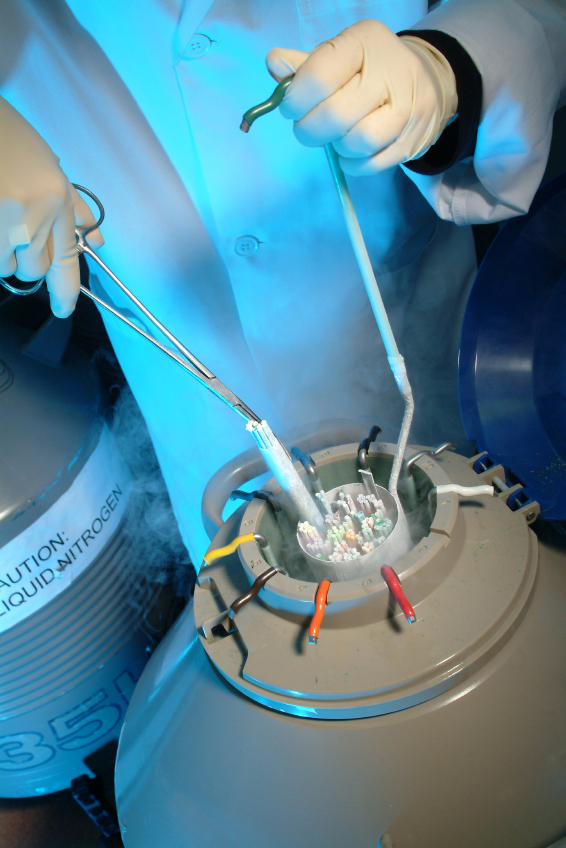To mark the 40 years of the Centres for study and preservation of human eggs and sperm (CECOS) a two-day debate has been organized at the Palais Bourbon on 12th and 13th September. The French Minister for Health Marisol Touraine introduced these days dedicated to the theme “From birth of MAP to future”. The evoked horizons are vertiginous. For 40 years, the exclusive consideration of the artificial procreation led to the elaboration of the notion of “right to the child” and initiated the selection of imperfect children. What was understood yesterday as a transgression today is presented as the fruit of the “social altruism”. Having assisted to these two days of debate, Gènéthique here presents three challenges of the MAP1 in 2013 and a critical analysis.
Altruism, presented as a central value of the MAP
For the speakers of the conference: The MPA is to help to give a child free from disease to parents who cannot have one for infertility reason, or who are carriers of serious genetically transmitted diseases. This way, the CECOS, organizers of the MAP, claim to give “the happiness to be parent” and recognize the “altruist approach” of donors. The question is to know if we can talk about altruism when it deals with the manufacture of children “born from a cold machine which deliberately makes them orphans without origins2”, and when these children3 rebel against the principle of anonymity of gamete donation. This is not a worry for the CECOS which focus on the very clear reduction of the number of donors.
60% of donors would renounce if the anonymity would be removed.
“Do not slow their altruist impulsion by asking them moreover to take responsibilities” a speaker insists. A single priority: to procure children to applying couples.
The donors are disconnected from reality of their donation, and the children grown up with the idea that family relationship is only “belief, words”.
The worsening of selection on genetic heritage and eugenics culture.
The other worry of the debate is about the technique which will allow giving a child free from any diseases within the framework of the AID4. For Pr. Siffroi: “soon, the genetic balance of donors will be [possible by] the complete sequencing of the genome for hundred dollars”. Pr. Stoppa-Lyonnet5 present this project of selection of donors on genetic heritage based on the opinion 120 of the CCNE6 relative to the non-invasive prenatal diagnosis test (NIPD) of Down syndrome. As a reminder, the CCNE by considering the NIPD as a “medical advance” and by denying its eugenic consequences (like it did with NPD for a long time) gave it a moral support7. The comparison between the NIPD and the decoding of the donor genome give information on the anaesthesia of the actors of the antenatal selection. The eugenic culture is developed to such an extent that today the actors of the MAP do not distinguish the degree of gravity between the elimination of human beings because of their genome and the exclusion of gametes from potential donors. Since then we have to wonder about the forces susceptible to oppose the purification project of genetic heritage in France.
Oocyte vitrification and procreation industry
3rd subject of the debate: the societal oocyte self-preservation. The oocyte self-preservation is only possible for medical reasons8. Pr. Frydmann and the CNGOF milit so that it is possible for societal reasons. Nevertheless, in addition to the individual risks9 it induces, the “convenience” oocyte preservation would blow the medical condition of the MAP10. In addition to have stocks of frozen gametes creates the conditions of the manufacture of embryos for the research and of their instrumentalisation. We can detect the interest of the researchers and pharmaceutical laboratories. And thus fearing that the authorization of the “convenience” MAP contributes to develop the procreation industry. Like with each development of the MAP let’s listen to the biologist Jacques Testart: the innovations of the MAP “are masked by utility arguments: mainly to satisfy the “parental project” and respect “the freedom of the research”. Then we can manufacture children without origins, or sorted in the test tube, but also use human embryos as an ordinary experimental material…11”.
Finally, this economic utilitarianism settles the MAP as single solution to infertility, ousting de facto the assistance to natural procreation. During the conference the specialists reveal: “with the ultra-performance of the MAP we circumvent the problems of fertility without even understanding the origin of the problem”.
A political challenge
Mid-September, the spokesperson of the government Najat Vallaud-Belkacem announced12 that the question of opening the MAP to homosexual couples were reported after 2013. She completed the information specifying that this debate would be part of a global text which would affect the whole bioethics challenges. The lobbying of promoters of the MAP has already been initiated.
1. Medically assited procreation (MAP);
2. Jacques Testart, ” l’Assistance conviviale à la procréation ” – Le Monde, 14/02/2013;
3. Represented by the association Procréation Médicalement Anonyme ;
4. Artificial insemination with third-party donor;
5. Institut Curie and University of Paris Descartes, Paris;
6. Opinion published on 25th April 2013;
7. Monthly letter Gènéthique-June 2013;
8. Authorized since the bioethics law of 2011, the oocyte vitrification allows women who undergo a medical treatment with a risk to alter their fertility or who gave their oocyte, to preserve their gametes for a later MAP;
9. Professor Le Lannou specifies that the oocyte stimulation and the puncture for oocyte retrieval are aggressive acts often useless since only 1 to 5% of the oocytes are reusable;
10. Genetically transmitted disease, infertility, medical treatment altering the fertility;
11. Jacques Testart ” Ne laissons pas les lobbies et les praticiens dicter leur loi à la bioéthique ” – Le Monde, 1/09/2013;
12. French Council of Ministers of 11th September 2013

